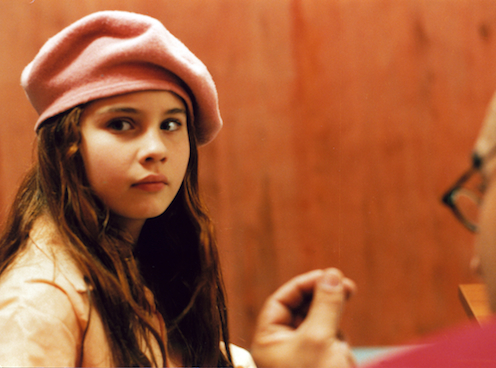Saint Clara

Full Description
The setting is a remote industrial town in Israel, sometime in the future. There's a clairvoyant named Clara in the local school's seventh grade class. She's a beatific Russian immigrant from a family of bear-hunting psychics, and enjoys prescient powers that bring the entire town to the brink of chaos. After Clara enters the picture, strange things begin to happen - the students stage a revolution, teachers dream of spending wild nights with Edith Piaf, and an earthquake rumbles in the distance. Clara also experiences her own inner turmoil when she's forced to choose between first love with Tikel, a fetching young rebel, and losing her prophetic gift - a metaphor for assimilation into her new country. The directors have crafted a compelling and energetic film served beautifully by a palette of startling colors. SAINT CLARA presents a fascinating, radically universalized vision of Israeli society in which the streets are lined with neon, and sophisticated adolescents experiment with gender and become the confidants of wacky teachers and parents. The film is based on a once-banned 1968 story by Czech writers Pavel and Yelena Kohout. 1996 Berlin Film Festival.
Filmmaker Bio(s)
Director Uri Sivan collaborated with Co-director Ari Fulman on SAINT CLARA for more than three years, writing the script together. "We wanted to stage the film in such a way that none of the locations will be recognized by Israeli viewers" explained Director Uri Sivan in a KALX Radio interview with Peter Crimmins of UC Berkeley student-run radio station. "Israelis always want to know where the action takes place."
"We shot the entire film in studio sets except for the school, which looks exactly like what schools in Israel look like, the street scenes and the swamp. There are no more swamps in Israel," added Sivan, "we had planned to flood a small forest when a very rainy winter, one that happens maybe once every ten years, came and created this natural swamp near a small town in the south of Israel. Very few people know about this place. We were lucky."
"The colors in the film are very strong" noted the radio interviewer. "Yes! And there is a certain color that you will NOT find in the film at all!" pointed Sivan. "It's a color that you see in almost every Israeli film and we avoided it; a certain dark green."
"In SAINT CLARA, the grownups live in the past. A fabricated past!" explained Sivan. "At the same time the young people are dealing with the present. At its base this film is about love. In the end, everyone in the film finds it in one way or another, even the school principal. We auditioned several hundred teenagers for the lead roles, specifically looking for people with no prior acting experience. When we saw 'CLARA' she didn't even have to say one word - we knew she had the part."
Director(s)
Country(ies)
Language(s)
w/English Subtitle
Release Year
Festival Year(s)
Running Time
84

